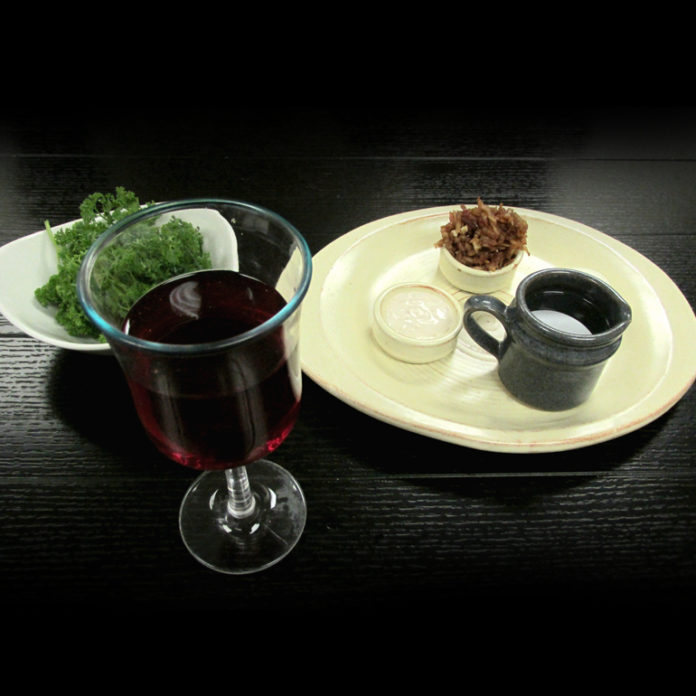
Passover is the ceremony followed by families of the Jewish faith on the eve of the Passover festival. It is a celebration of what the Lord (“YAHWEH”) did in freeing Israel from slavery in Egypt. That act of redemption was taken not just as history; every Jew considers the experience as personal: “This is what Yahweh did for me when / came out of slavery”. So this ceremony could equally well be called a Freedom Meal. Because of what Yahweh has done for us – for me – there is no more condemnation, no more guilt. There is joy and freedom and a new life of righteousness. The Passover Meal is centrally a banquet for, and with, the Messiah.
It was used by Jesus of Nazareth, worshipped as Messiah-Christ by his followers. Jesus, on the very night he was betrayed, took bread and broke it to show his followers how he would die and how they might find life through his death. And when he took the third cup he said to them, “This cup is the new covenant-relationship with God, made possible by the blood of my death.” He told his followers to be especially aware of his presence every time they ate together in this way.
The early Church met often to share the Lord’s Supper, all the while learning to discern his presence and to follow him in life and death. The meal has continued to be the central and most significant act of worship in the lives of the followers of Jesus. They say, “Christ our Passover has been sacrificed. Let us celebrate the feast, then, by getting rid of all the old yeast of evil and wickedness, having only the unleavened bread of sincerity and truth.” This meal has been translated into the Holy Communion that many Christians share as they remember the sacrifice of Jesus and promise that came with his death and resurrection.
There is a huge amount of symbolism in the Passover meal and the words that Jesus shared with us during this time affirm the fulfillment of the Old Testament and Jewish prophesies. Because of this, many Christian’s follow the Passover meal on Maundy Thursday as part of the Holy Week celebrations before Easter weekend.
Lady Lee and Xena decided to invite two guests into the All Access Kitchen to partake in the Passover, to explore the rich meaning behind the old festival and to experience Jesus’ promises in a new way.
Have a listen:

This was our simplified Seder plate with the six symbolic foods: The zeroah – lamb (sacrifice), the betzah – egg (new life), maror – bitter herbs (suffering), charoseth – apple, spices, nuts (bricks/slavery/bitterness sweetened by faith), karpas – green herbs and salt – (spring/new life, with tears) and matzah – unleavened bread (the exodus from slavery).
The most significant of all the elements on the table is that there are three layers of matzah. There are 3 pieces, wrapped in cloth and placed on top of each other. The Master of the House breaks the middle piece, representing Jesus. And while the children cover their eyes, hides or “buries” that portion. It is called the aphikomen. After dinner the children search for the missing aphikomen. The adults play too (e.g. “You’re getting warmer”). Soon someone finds it and brings it to the Master. He ‘redeems’ it by paying a price – giving a gift to the child. This bread (symbolizing Jesus’ body) is redeemed, exchanged for a price, brought back into the light and the community. This is the bread we use for the communion, that Jesus breaks and gives to us to represent His new covenant, his atonement for our sins.
Jesus exchanged his life so that we may be redeemed. He was God’s son, sent from God, to take on the wickedness and depravity that all of us have inside, the selfishness, greed and hate that we all have in us, even if it is just a little.
Wouldn’t it be wonderful to know that no matter how flawed you are, and no matter how unworthy you are, that you have someone who loves you so much that He would lay down His life for you, so that you would be able to have a life full of joy, peace and contentment?
Well, you have someone like that. His name is Jesus. And today we celebrate His sacrifice and our redemption.
